‘Daughter of Kurds’: Meet the social media queen fighting to preserve rural cultural heritage in northeastern Syria (Photos)
From her small village in northeastern Syria, Keça Kurda tries to preserve Kurdish cultural heritage and to pass it on to younger generations through social media.
3 October 2022
QAMISHLI—Keça Kurda never liked her given name. Her nickname—which means “Daughter of the Kurds” in Kurmanji, pronounced “Kecha Kurda”—comes from her passion for Kurdish folklore, and her habit of going about in handmade traditional dresses.
“I chose this nickname in my youth because it was important for me to have a name that reflects my identity and what I do,” Keça Kurda, who is now in her fifties, tells Syria Direct at her house in the village of Mashoq, in the eastern countryside of Qamishli city.
Over the years, her small house in Hasakah province has become a miniature museum, filled with hand-embroidered clothes, discarded farm tools and dozens of items that were once essential for daily tasks but are now seldom used: stone grinding mills, or butter churns made of goatskin.
Like many elders in rural areas, Keça Kurda is a deep well of memory, an invaluable keeper of dying traditions. But what sets her apart from the rest of her generation is her success in sharing her knowledge with a wide audience, although she cannot read or write.
Every day, she uploads videos on her Facebook page, which is managed by her niece and followed by more than 42,000 people in Syria and beyond. In them, she shares stories from her youth, recipes, folktales and knowledge about local plants, passing on fading cultural heritage to younger generations.
A simple life
Like most houses in Mashoq, Keça Kurda’s home is built with a mixture of dry mud, animal dung and hay, local materials that are readily available, inexpensive and which efficiently regulate indoor temperatures.
Despite these advantages, people who can afford to do so are increasingly abandoning mud buildings for concrete houses that are often perceived as cleaner and more modern-looking.
But Keça Kurda thinks exactly the opposite.
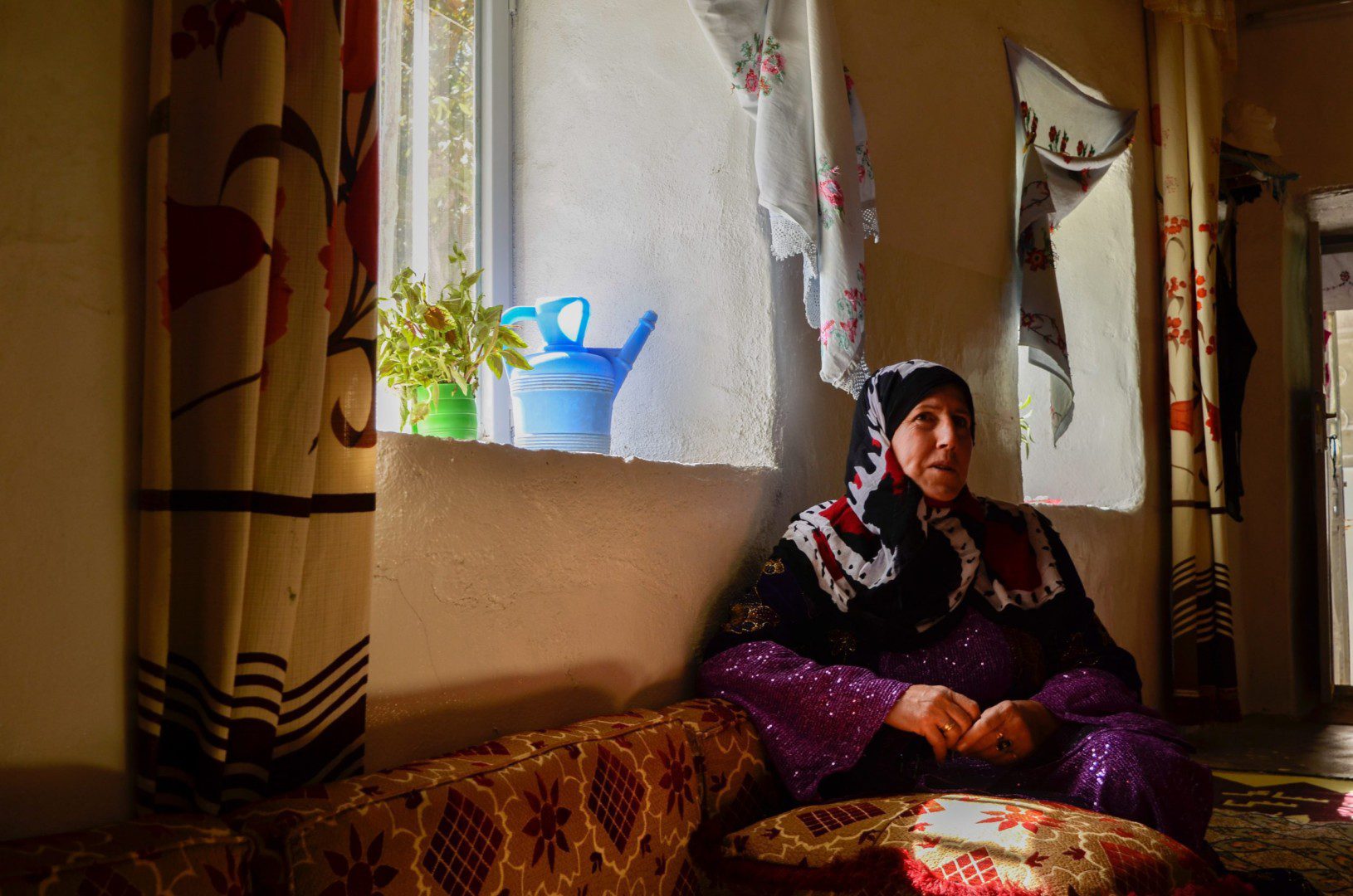
Keça Kurda, in her living room in Mashoq, 27/9/2022 (Lyse Mauvais/Syria Direct)
“We built this house ourselves, my siblings and I,” she says with pride. “I very much love this house, and always refused to turn it into a modern house.”
Every few years, mud-and-hay buildings need to be coated with a fresh layer to prevent weathering. This requires specific techniques, which are increasingly lost as mud-building falls out of fashion. Living in and caring for a traditional house is one way to preserve this knowledge.
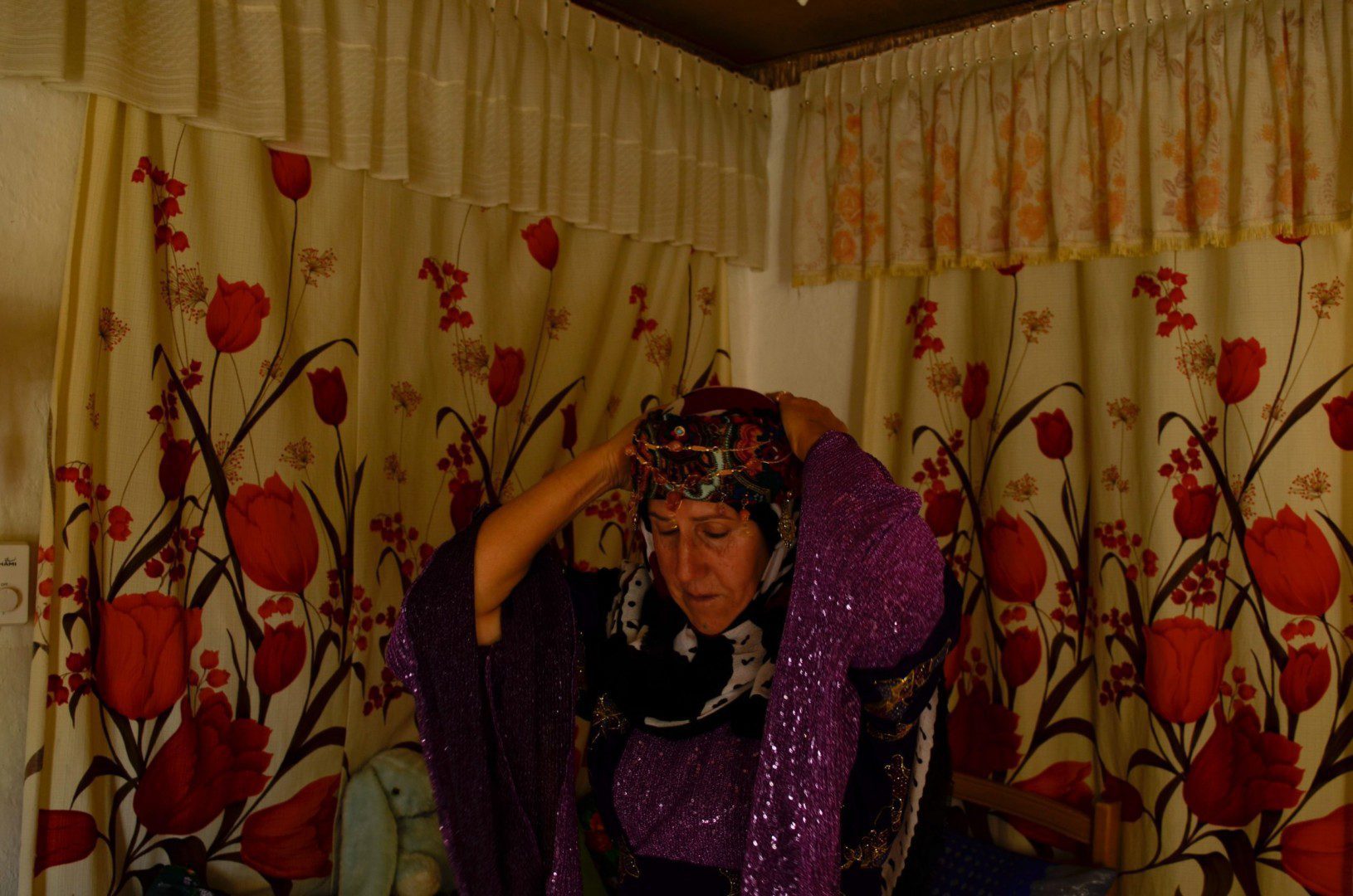
Keça Kurda puts on a handmade, traditional Kurdish headdress, 27/9/2022 (Lyse Mauvais/Syria Direct)
Likewise, Keça Kurda seldom enters a clothes store. She prefers to wear traditional dresses she sews at home. The walls of her house are decorated with floral curtains and hand-embroidered textiles featuring characters from folktales, such as Shahmaran, a mythological creature that is half woman and half snake.
Preserving heritage
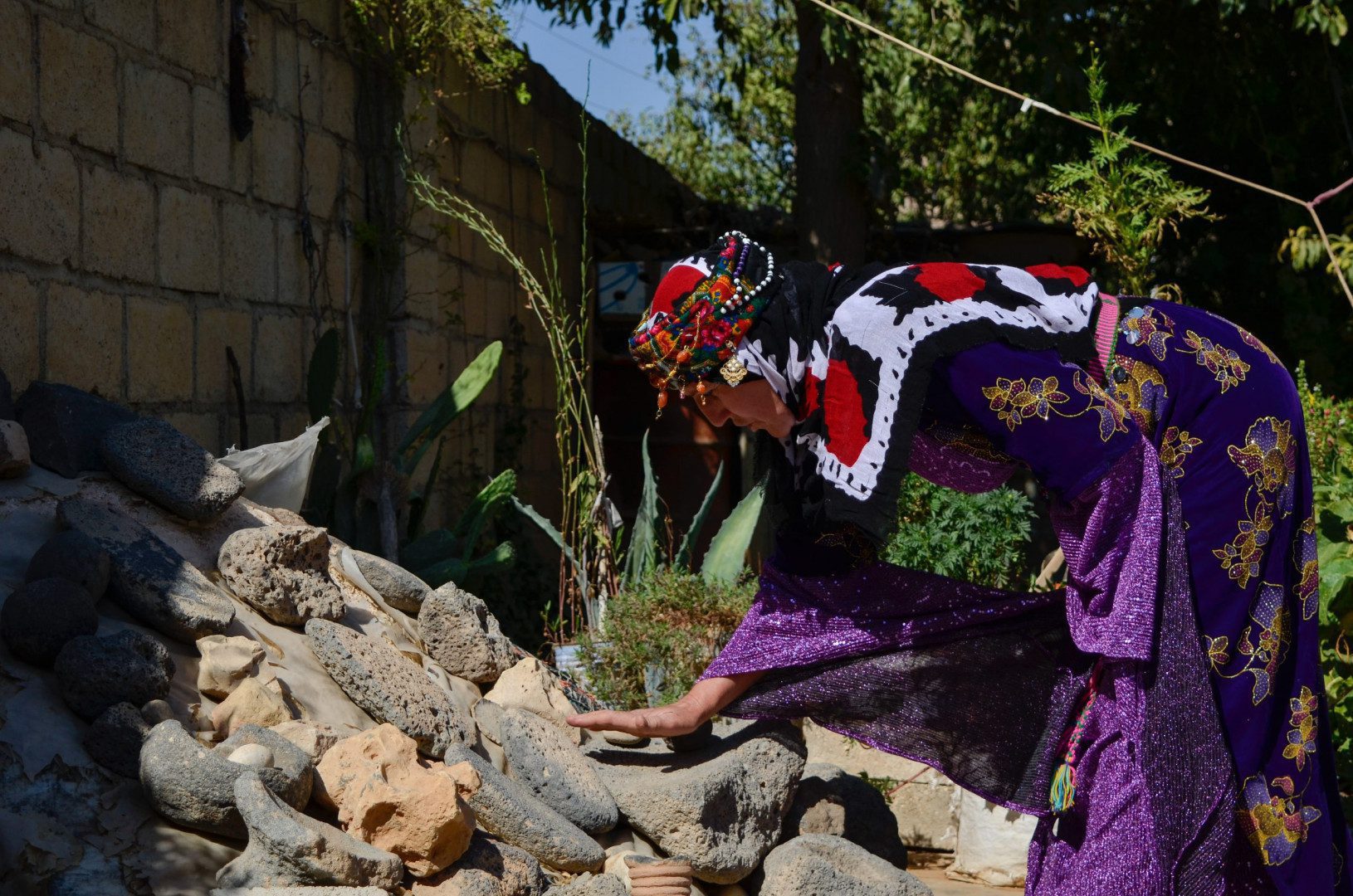
A collection of grinding mills and old pottery in Keça Kurda’s garden, 27/9/2022 (Lyse Mauvais/Syria Direct)
Over the years, Keça Kurda has accumulated hundreds of items, textiles and furniture that were once mainstays of daily village life in Syria. Some she collected from neighbors and elders in the village; others she received from visitors who did not want them to disappear.
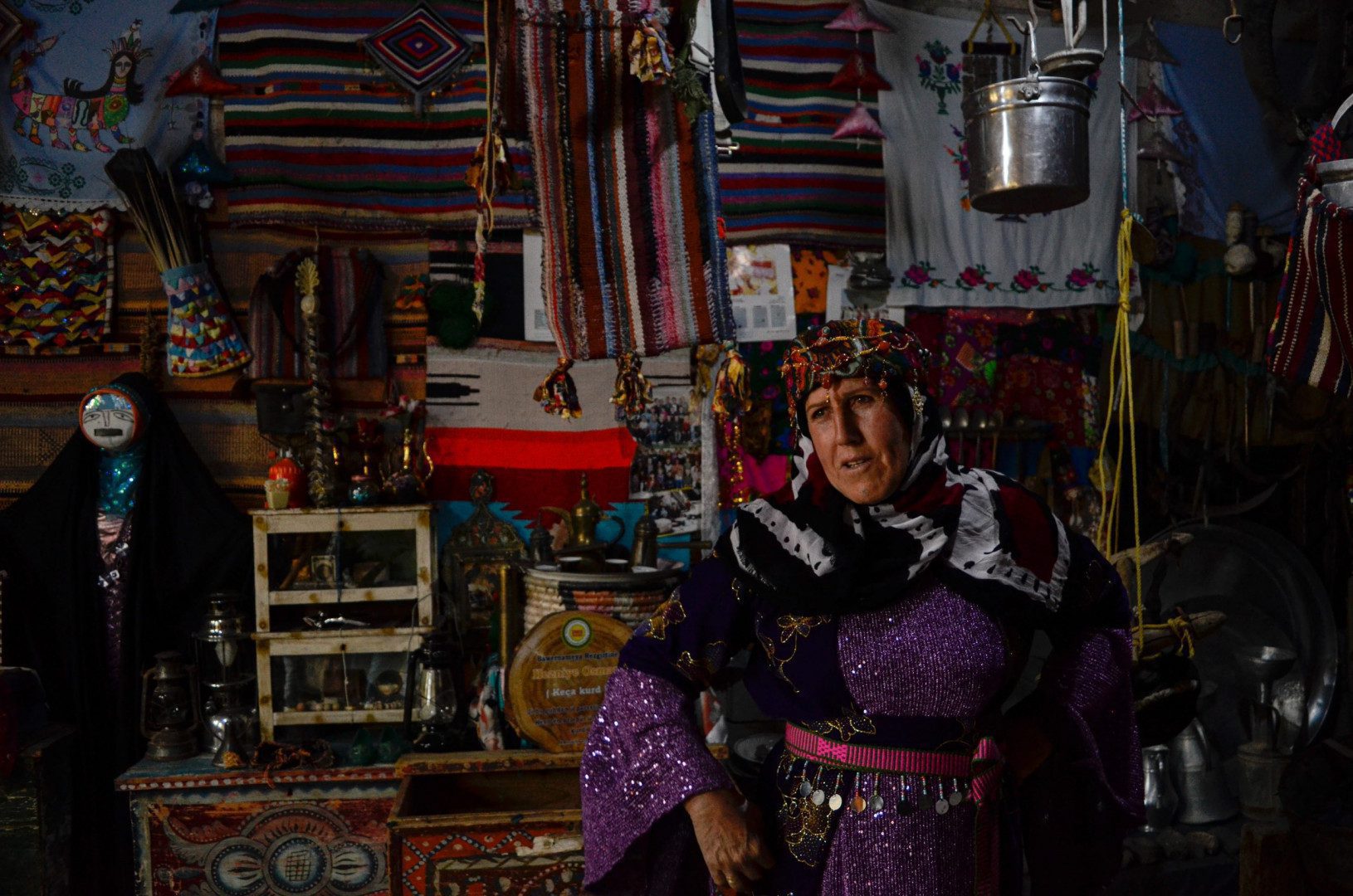
One of the rooms of Keça Kurda’s house is a miniature museum, 27/9/2022 (Lyse Mauvais/Syria Direct)
Collecting more has become her passion.
“When I was a child, I really loved studying, but I dropped out of school in third grade,” Keça Kurda recalls. “My thirst for knowledge didn’t go away. As I got older, I became very curious. Much like a journalist, I would go around and interview my neighbors, listening to their stories. I wanted to know everything, photograph everything and to document all I could about Kurdish folklore.”
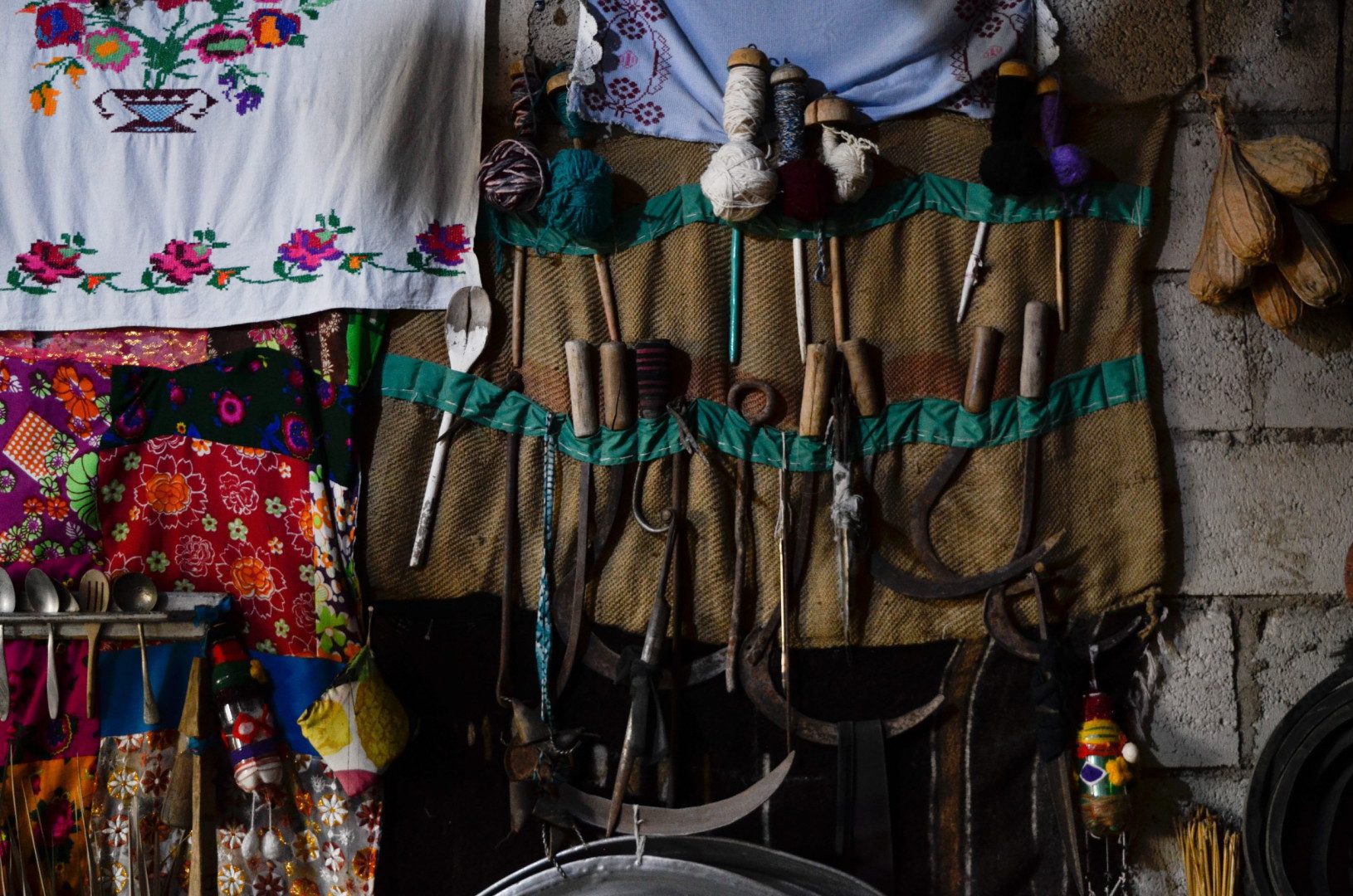
A collection of drop spindles and old agricultural tools, now mostly replaced by modern machinery and tractors, 27/9/2022 (Lyse Mauvais/Syria Direct)
When not in her small museum, Keça Kurda sometimes strolls to the fringes of Mashoq, looking for wild herbs and rare plants. Some she harvests, dries and preserves to make traditional medicine. Others, she delicately uproots, or picks their seeds, transferring them to her garden to guard them from accidental destruction.
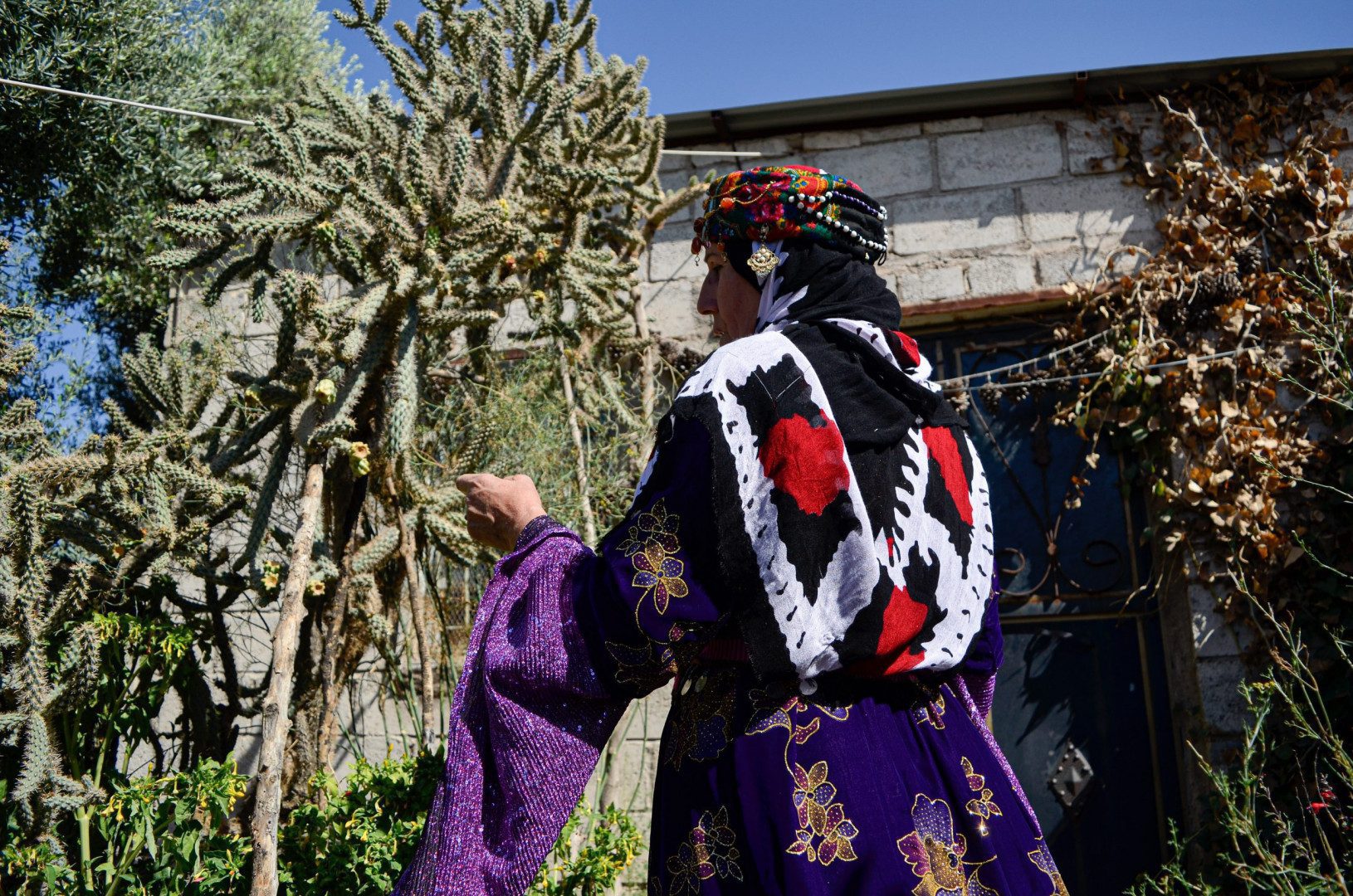
Filled with local plants and medicinal herbs, Keça Kurda’s garden pays tribute to the knowledge of previous generations and the close relationship rural communities still have with nature, 27/9/2022 (Lyse Mauvais/Syria Direct)
She spends hours in her lush garden, filled with a wide range of shrubs, cacti, aloes, flowers, fruit trees and the hum of insects. “I grew up in a family of farmers, we had a lot of fruit trees. I can spend the whole day in the garden and not get tired. I forget myself there,” she says. Threads hang between the branches of trees, loaded with fruits and seed pods left out to dry in the sun.
In her Facebook videos, Keça Kurda also shares knowledge about gardening and local plants.
Changing times
Once the beating hearts of vibrant communities, villages like Mashoq are slipping into oblivion as youth leave them to seek new opportunities in cities and abroad. With time, the daily life of those who stay behind has also changed.
In some streets, concrete villas have popped up, towering over flat mud roofs. The hum of a few generators and machines tilling the land hangs over quiet afternoons. Tuna cans and ready-made preserves have crept onto kitchen shelves. And women now mill around in market-bought dresses that resemble one another, wearing colorful scarves that may well be imported from the other side of the world.
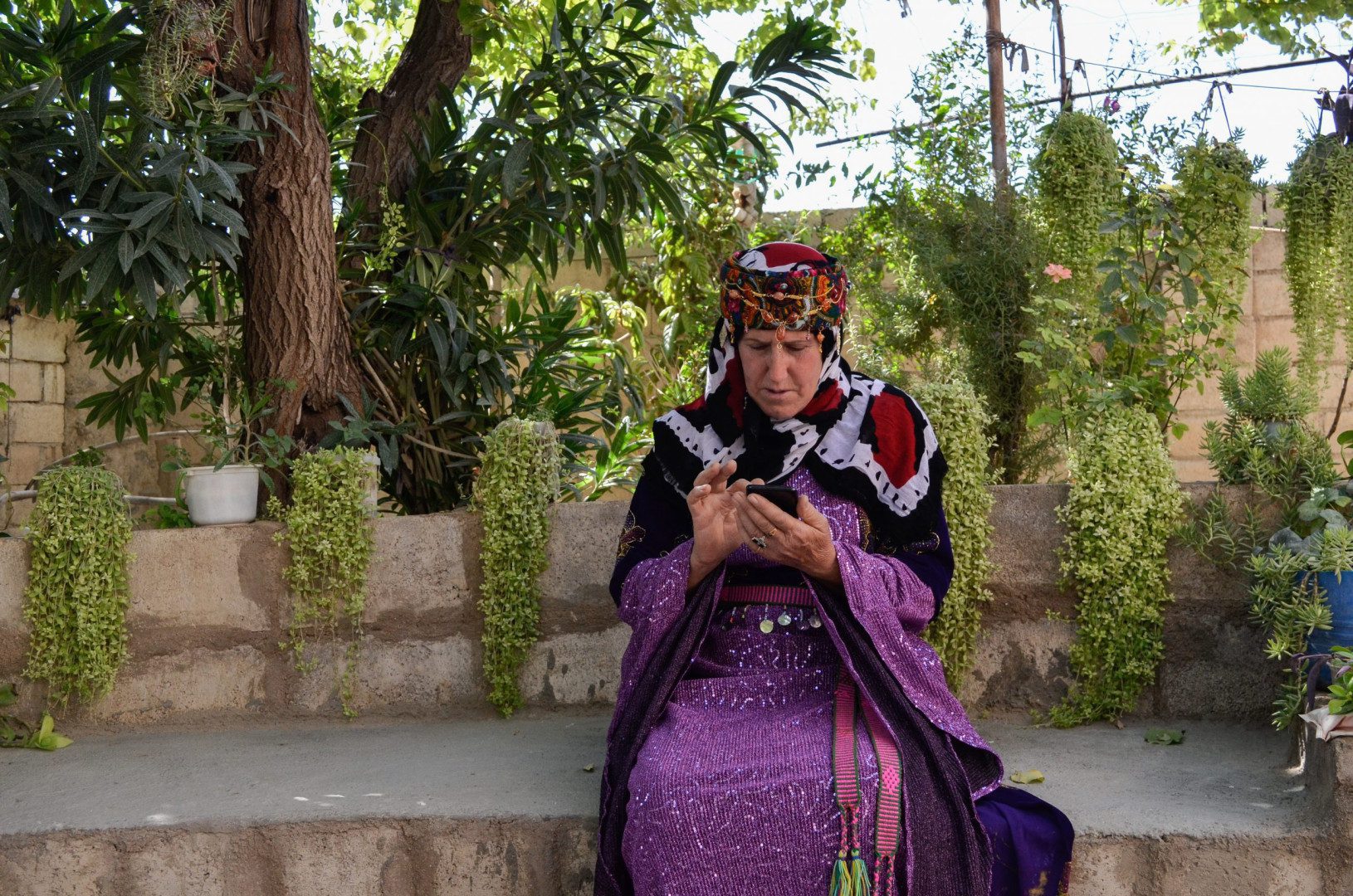
Every day, Keça Kurda shares videos on social media, presenting her daily life and traditional Kurdish heritage, 27/9/2022 (Lyse Mauvais/Syria Direct)
But Keça Kurda has found a happy footing in this tide of change. Tens of thousands of people follow her Facebook page, and she has become a local celebrity in northeastern Syria, frequently receiving visits from journalists, officials and tourists from all over northern Syria, Iraqi Kurdistan and even Europe.
From her beloved mud house she documents, records and shares knowledge gathered over the course of a lifetime with younger generations—a living beacon of disappearing cultural heritage.
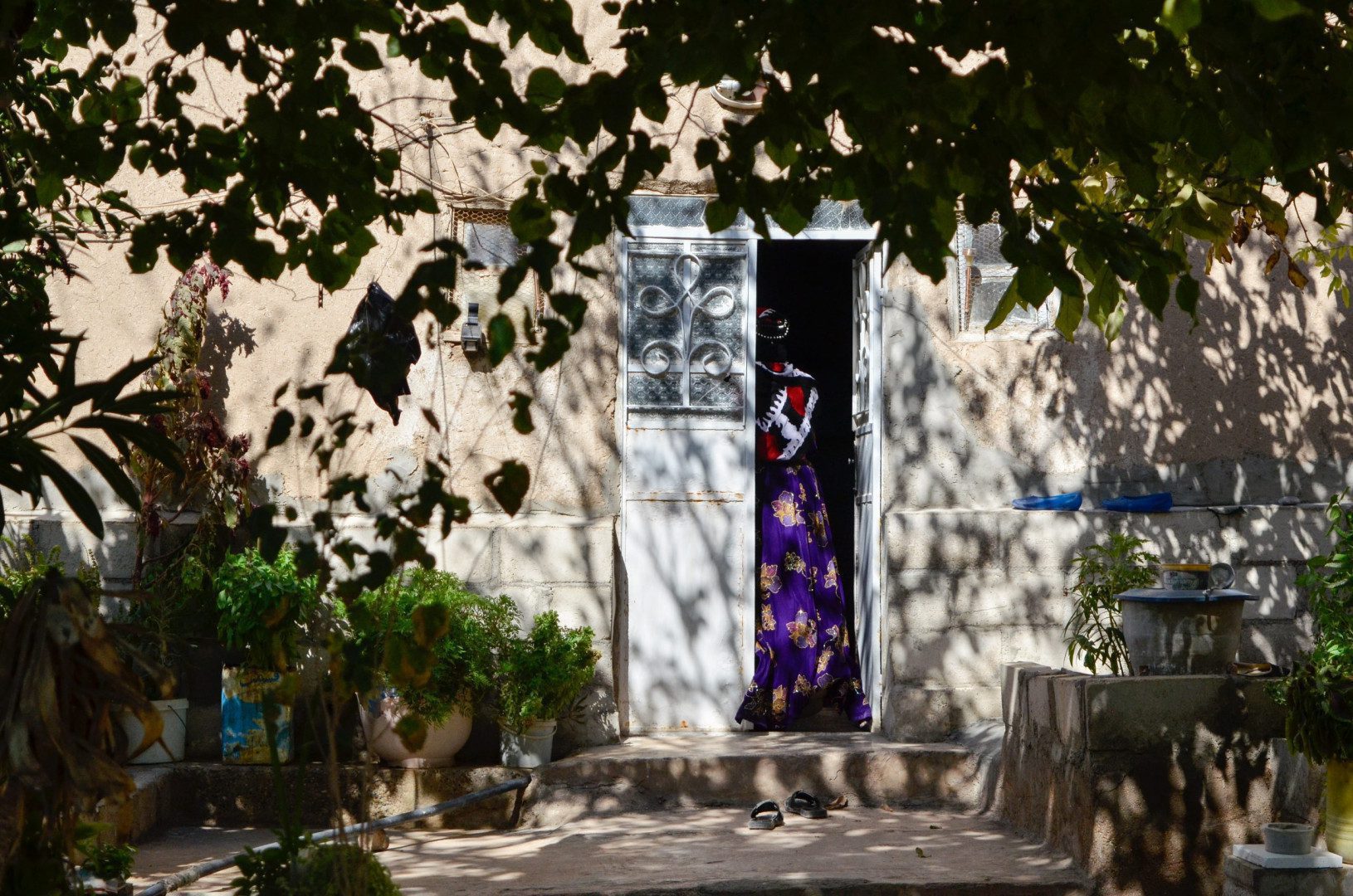
Keça Kurda enters her house in Mashoq, northeastern Syria, 27/9/2022 (Lyse Mauvais/Syria Direct)







